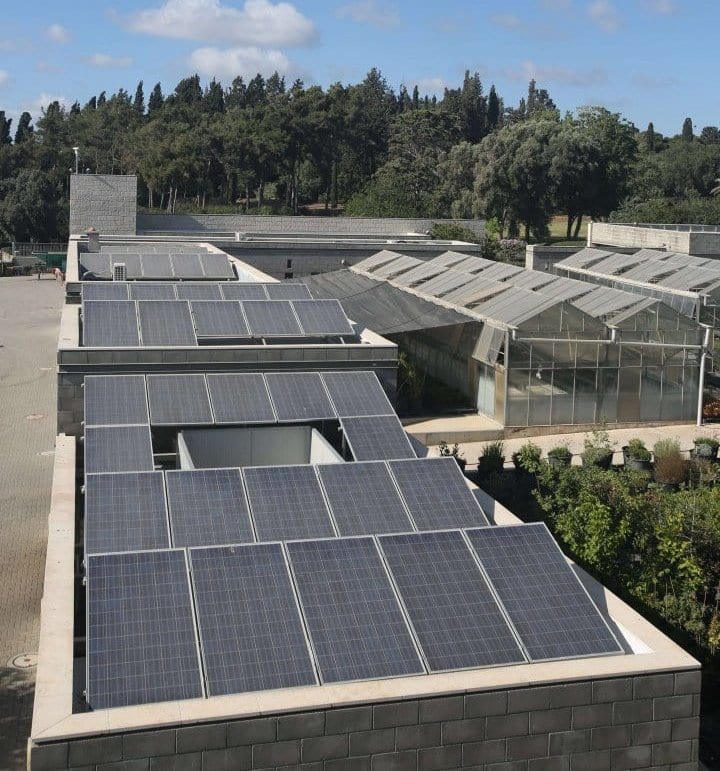On the Roof: Creating Clean Energy
Solar energy from the sun is considered to be a clean, renewable energy source.
 News and Events
News and Events
Solar energy from the sun is considered to be a clean, renewable energy source.

Israel’s climate conditions enable efficient production of energy using photovoltaic collectors.
A photovoltaic collector (panel), protected by glass against weather hazards, contains a large number of solar (photovoltaic) cells made primarily of silicon by chip manufacturing, and is built from silicone semi-conductor material. When exposed to light, electrons detach and create movement that produces energy. An inverter is responsible for transferring the voltage produced by the collectors from direct current (DC) to alternating current (AC), which feeds into the national electricity grid. The Israel Electric Corporation only needs to install a two-way gauge that is used to charge and credit the electricity bill.
Currently, two solar panel systems have been installed at Ramat Hanadiv on the roofs of buildings in the operations area; up-to-date information on system output is provided on an external screen.
Together, the systems provide ca. 20% of electricity consumption at Ramat Hanadiv.
The staff of Ramat Hanadiv monitors and checks the efficiency of the systems on a monthly basis.
In addition, two unique solar trees at Ramat Hanadiv demonstrate the importance of transferring to renewable energy and the great potential it holds.
One tree is located in the Footprint Garden – the energy produced by the tree cools the water and pumps it to the adjacent cooler.
The second tree, a little further away, waits for you in the Sustainability Garden – its design was inspired by the Palestine terebinth, a local tree.
Any question? We will be glad to help
The main entrance to the Memorial Gardens – located next to the Visitors Pavilion. In the entrance plaza are temporary exhibitions on a range of subjects promoted by Ramat Hanadiv
Sustainable gardening is defined as gardening that considers the needs of the current generation without harming the needs of future generations. It includes garden design that considers the existing elements on site – the landscape, soil, environment and vegetation suitable for the region
The picnic area is located near the secondary parking lot. You are welcome to spend time there before or after your tour of the Gardens.